kottke.org posts about taxis
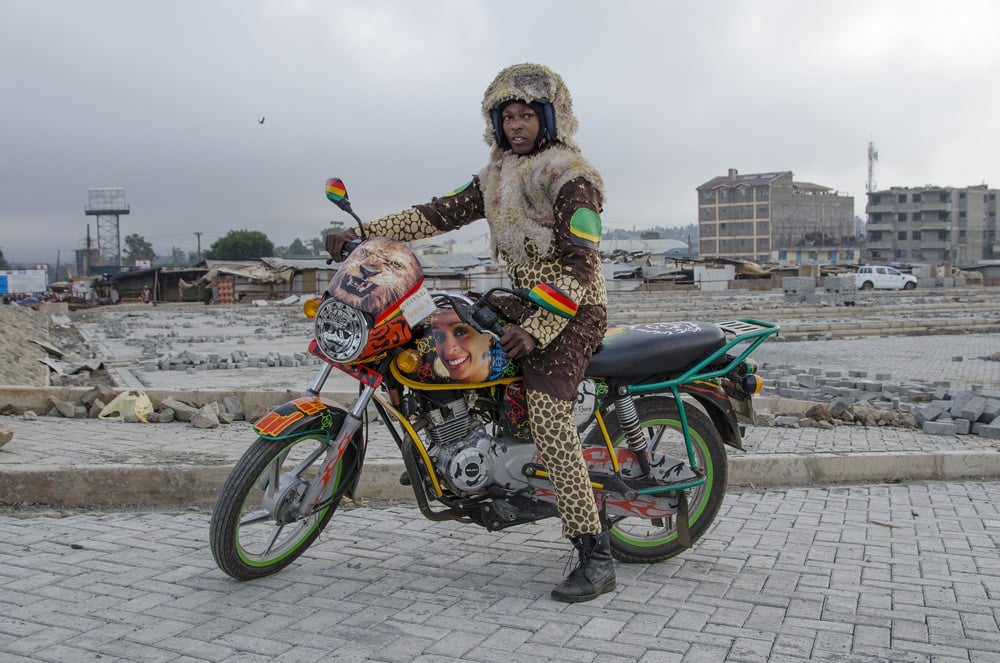
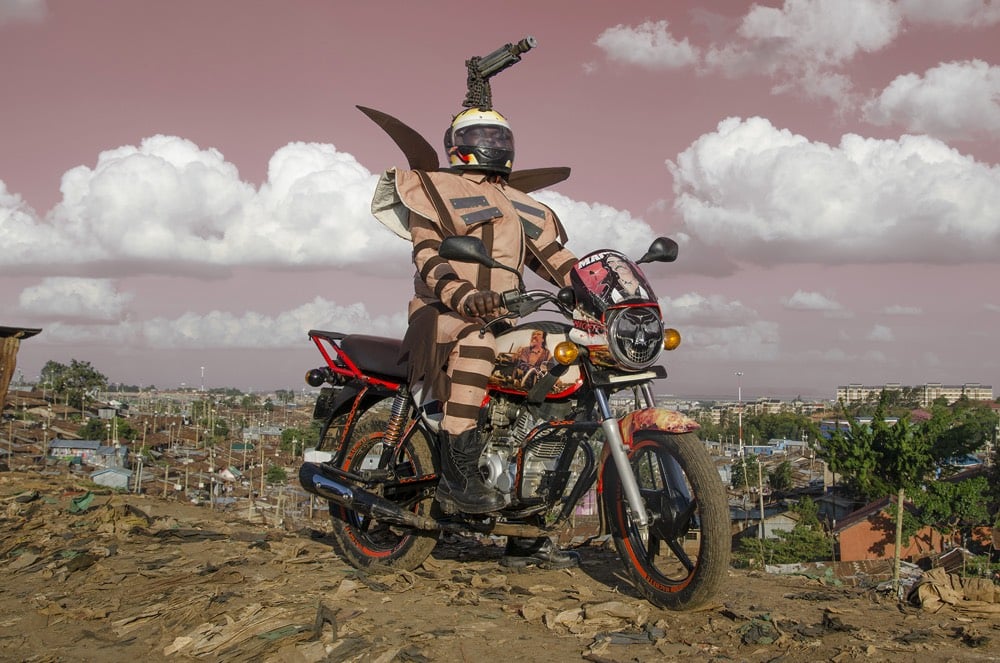
Ugandan-Kenyan fashion designer Bobbin Case and Dutch artist Jan Hoek have collaborated on a project called Boda Boda Madness. Inspired by the elaborate decorations used by some boda boda (motorbike taxi) drivers in Nairobi to attract customers, Case designed costumes to go with each bike’s decorations and Hoek photographed the results. After the fact, the coordinated outfits proved good for business:
The nice thing is that because of their new outfits their income went up, so they really kept on using their costumes.
Hoek also did a project called Scooters Will Never Die, in which he worked with a group of Africa refugees in Amsterdam to customize scooters to their riders’ specifications.
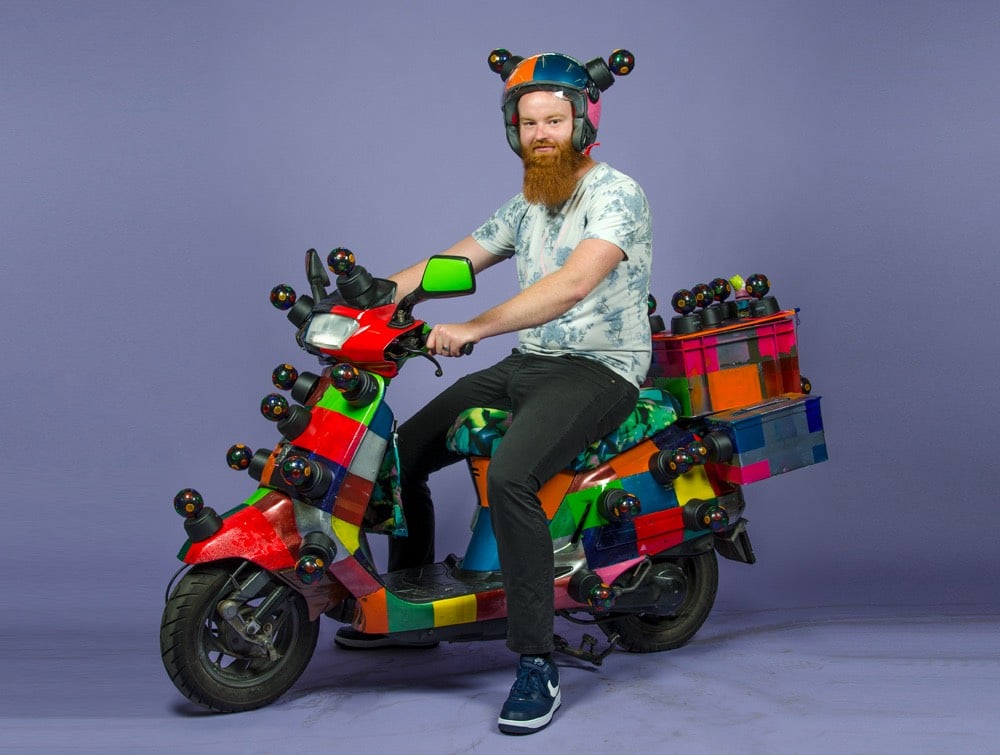
(via colossal)
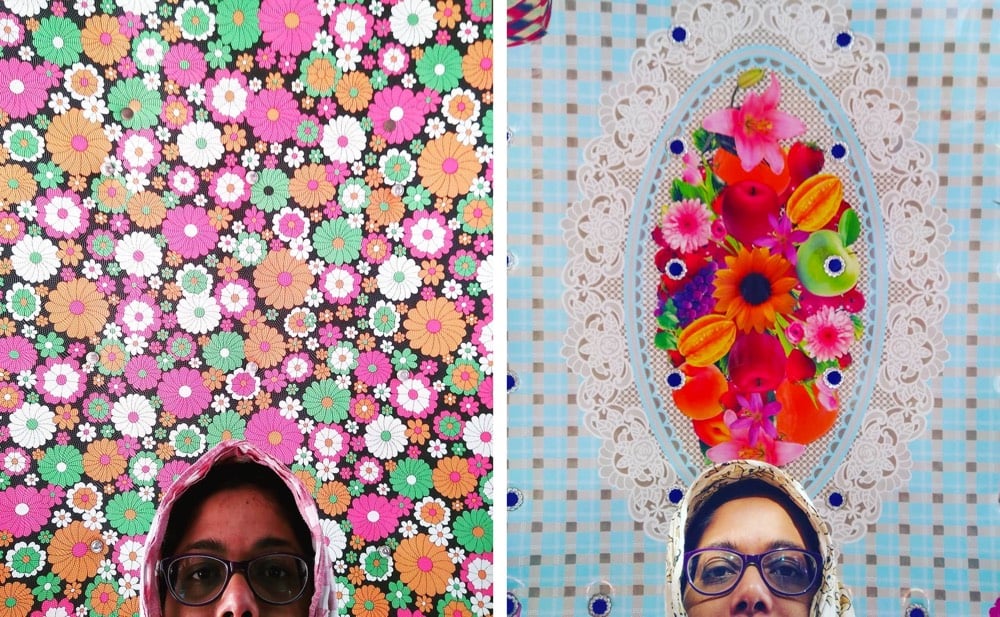
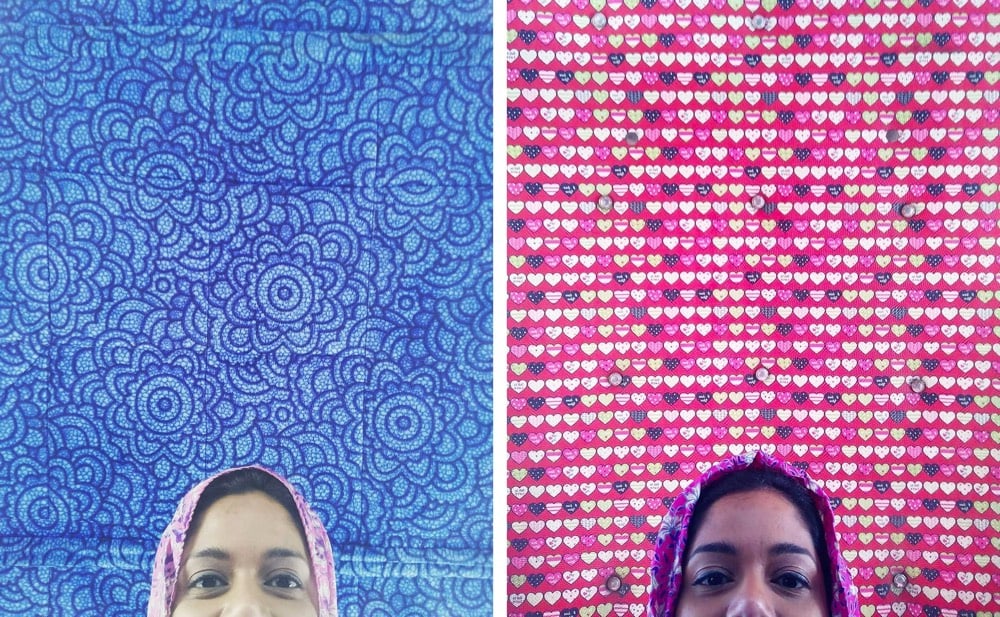
Since April 2017, Rachel Lopez has been taking photos of the ceilings of Mumbai taxis, many of which are decorated with colorful vinyl overlays. As Lopez says in a piece she wrote for PRI, “it’s more fun than the cold, gray inside of an Uber”. (via @themexican)
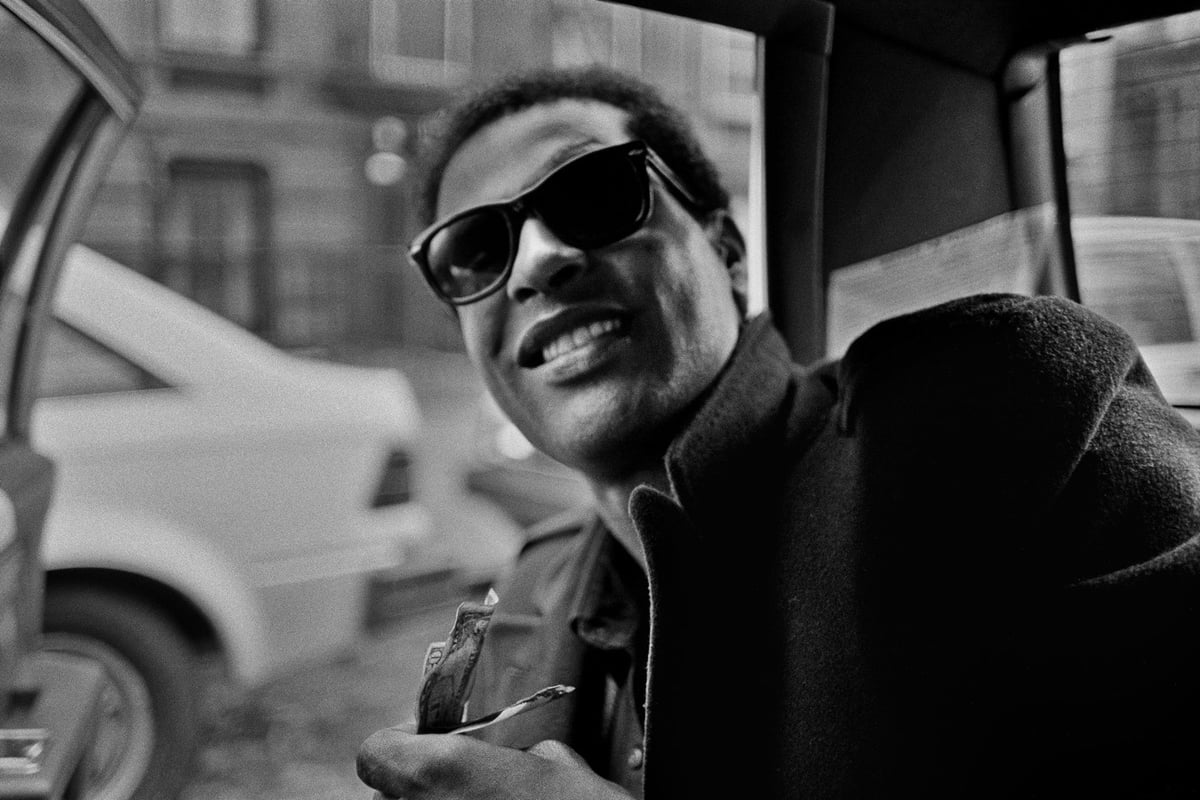
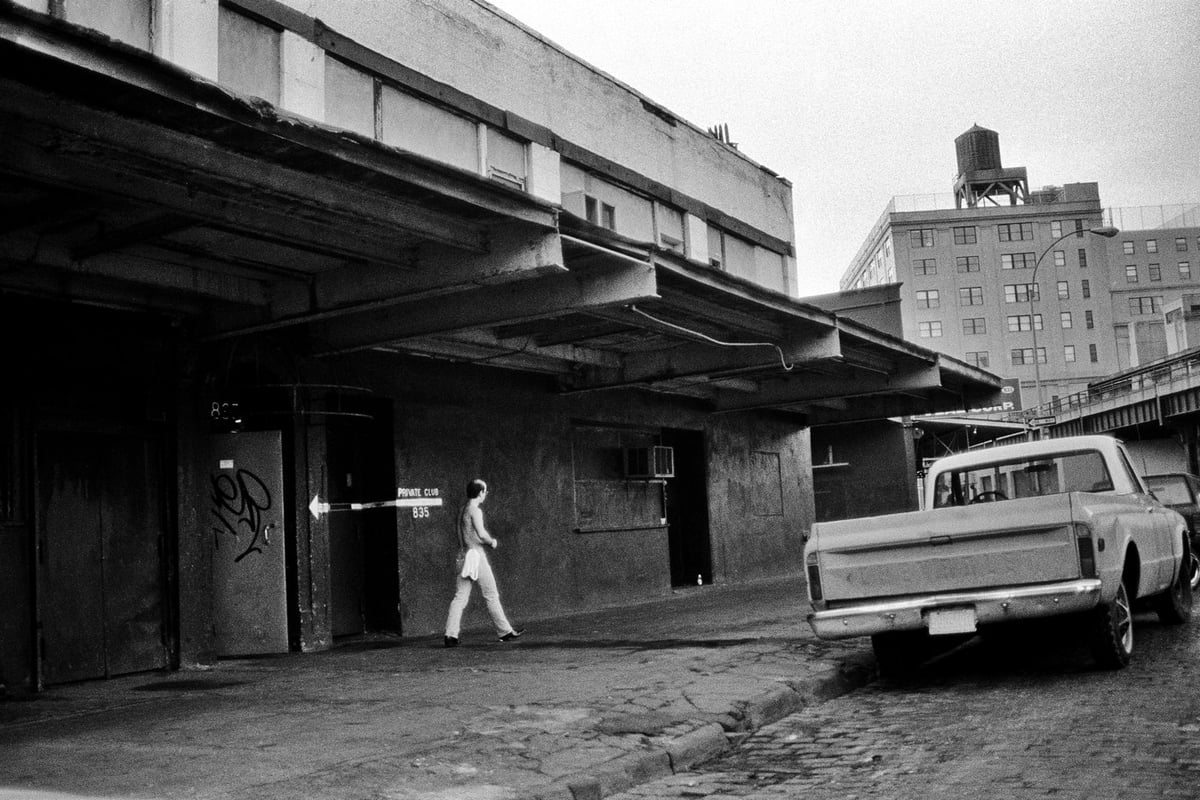

Joseph Rodriguez drove a cab in NYC in the 70s and 80s and for some of that time, he took photos of his fares and of the city out of the windows of his cab. It’s a street-level look into the city’s more gritty past.
“I loved the frenetic energy of the city at that time. I once picked up a guy from the Hellfire club, an S&M club, and by the time I dropped him off on the Upper East Side, he had changed his leather cap and everything and put on a pink oxford shirt and some penny loafers. ‘Good morning, sir,’ the doorman said.”
You can see more of Rodriguez’s work here.
Todd Schneider used a couple publicly available data sets (NYC taxis, Uber) to explore various aspects of how New Yorkers move about the city. Some of the findings include the rise of Uber:
Let’s add Uber into the mix. I live in Brooklyn, and although I sometimes take taxis, an anecdotal review of my credit card statements suggests that I take about four times as many Ubers as I do taxis. It turns out I’m not alone: between June 2014 and June 2015, the number of Uber pickups in Brooklyn grew by 525%! As of June 2015, the most recent data available when I wrote this, Uber accounts for more than twice as many pickups in Brooklyn compared to yellow taxis, and is rapidly approaching the popularity of green taxis.
…the plausibility of Die Hard III’s taxi ride to stop a subway bombing:
In Die Hard: With a Vengeance, John McClane (Willis) and Zeus Carver (Jackson) have to make it from 72nd and Broadway to the Wall Street 2/3 subway station during morning rush hour in less than 30 minutes, or else a bomb will go off. They commandeer a taxi, drive it frantically through Central Park, tailgate an ambulance, and just barely make it in time (of course the bomb goes off anyway…). Thanks to the TLC’s publicly available data, we can finally address audience concerns about the realism of this sequence.
…where “bridge and tunnel” folks go for fun in Manhattan:
The most popular destinations for B&T trips are in Murray Hill, the Meatpacking District, Chelsea, and Midtown.
…the growth of north Williamsburg nightlife:
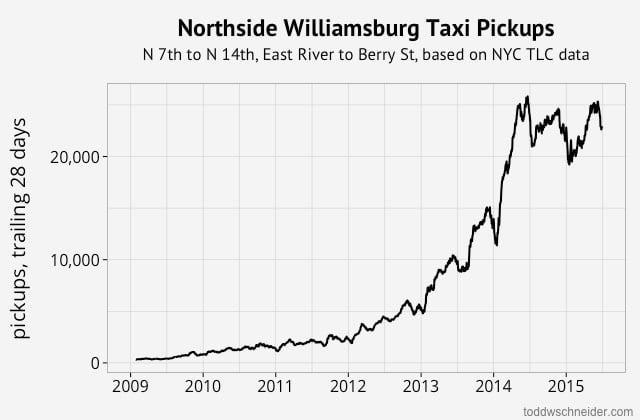
…the privacy implications of releasing taxi data publicly:
For example, I don’t know who owns one of theses beautiful oceanfront homes on East Hampton’s exclusive Further Lane (exact address redacted to protect the innocent). But I do know the exact Brooklyn Heights location and time from which someone (not necessarily the owner) hailed a cab, rode 106.6 miles, and paid a $400 fare with a credit card, including a $110.50 tip.
as well as average travel times to the city’s airports, where investment bankers live, and how many people pay with cash vs. credit cards. Read the whole thing and if you want to play around with the data yourself, Schneider posted all of his scripts and knowhow on Github.
Update: Using summaries published by the New York City Taxi & Limousine Commission, Schneider takes a look at how taxi usage in NYC is shrinking and how usage of Uber is growing.
This graph will continue to update as the TLC releases additional data, but at the time I wrote this in April 2016, the most recent data shows yellow taxis provided 60,000 fewer trips per day in January 2016 compared to one year earlier, while Uber provided 70,000 more trips per day over the same time horizon.
Although the Uber data only begins in 2015, if we zoom out to 2010, it’s even more apparent that yellow taxis are losing market share.
Lyft began reporting data in April 2015, and expanded aggressively throughout that summer, reaching a peak of 19,000 trips per day in December 2015. Over the following 6 weeks, though, Lyft usage tumbled back down to 11,000 trips per day as of January 2016 — a decline of over 40%.
Great piece about The Knowledge, the collection of geographical information that all London taxi drivers must learn before becoming a cabbie.
The guidebook issued to prospective cabbies by London Taxi and Private Hire (LTPH), which oversees the test, summarizes the task like this:
To achieve the required standard to be licensed as an “All London” taxi driver you will need a thorough knowledge, primarily, of the area within a six-mile radius of Charing Cross. You will need to know: all the streets; housing estates; parks and open spaces; government offices and departments; financial and commercial centres; diplomatic premises; town halls; registry offices; hospitals; places of worship; sports stadiums and leisure centres; airline offices; stations; hotels; clubs; theatres; cinemas; museums; art galleries; schools; colleges and universities; police stations and headquarters buildings; civil, criminal and coroner’s courts; prisons; and places of interest to tourists. In fact, anywhere a taxi passenger might ask to be taken.
If anything, this description understates the case. The six-mile radius from Charing Cross, the putative center-point of London marked by an equestrian statue of King Charles I, takes in some 25,000 streets. London cabbies need to know all of those streets, and how to drive them — the direction they run, which are one-way, which are dead ends, where to enter and exit traffic circles, and so on. But cabbies also need to know everything on the streets. Examiners may ask a would-be cabby to identify the location of any restaurant in London. Any pub, any shop, any landmark, no matter how small or obscure — all are fair game. Test-takers have been asked to name the whereabouts of flower stands, of laundromats, of commemorative plaques. One taxi driver told me that he was asked the location of a statue, just a foot tall, depicting two mice sharing a piece of cheese. It’s on the facade of a building in Philpot Lane, on the corner of Eastcheap, not far from London Bridge.
The goal is to install a complete map of London in the brain of every licensed taxi driver. And indeed, according to neuroscientist Eleanor Maguire, the part of the brain responsible for memory becomes physically bigger as The Knowledge is absorbed.
Seeing, for a Knowledge candidate, is everything — at its heart, the Knowledge is an elaborate exercise in visualization. When McCabe called-over, he closed his eyes and toggled between views: picturing the city at street level, the roads rolling out in front of him as if in a movie, then pulling the camera back to take in the bird’s eye perspective, scanning the London map. Knowledge boys speak of a Eureka moment when, after months or years of doggedly assembling the London puzzle, the fuzziness recedes and the city snaps into focus, the great morass of streets suddenly appearing as an intelligible whole. McCabe was startled not just by that macroview, but by the minute details he was able to retain. “I can pull a tiny little art studio just from the color of the door, and where it’s got a lamppost outside. Your brain just remembers silly things, you know?”
I could go on and on…I loved this piece. Don’t miss the video of a prospective cabbie calling out the route he would use to go from Rotherhithe Station to the Natural History Museum, entirely from memory without looking at a map. Compare with Google’s driving directions.
Update: View From the Mirror is a blog written by a London cabbie, which includes his experience training for The Knowledge. (thx, bryan)
This clever and well-done visualization shows where individual NYC taxis picked up and dropped off their fares over the course of a day.
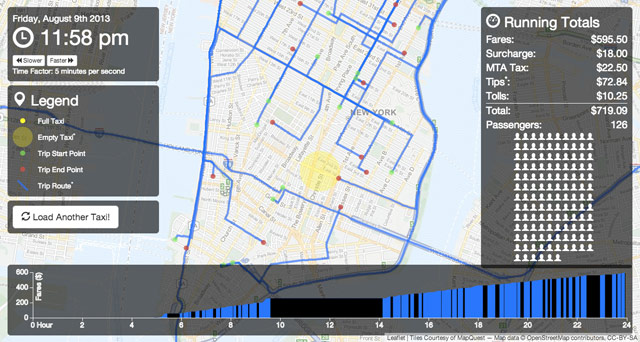
Mesmerizing. Has anyone done analysis on which drivers are the most effective and what the data shows as the most effective techniques? The best drivers must have their tricks on where to be at which times to get the most fares. (via @dens)
An instant classic John Gruber post about the sort of company Apple is right now and how it compares in that regard to its four main competitors: Google, Samsung, Microsoft, and Amazon. The post is also about how Apple is now firmly a Tim Cook joint, and the company is better for it.
When Cook succeeded Jobs, the question we all asked was more or less binary: Would Apple decline without Steve Jobs? What seems to have gone largely unconsidered is whether Apple would thrive with Cook at the helm, achieving things the company wasn’t able to do under the leadership of the autocratic and mercurial Jobs.
Jobs was a great CEO for leading Apple to become big. But Cook is a great CEO for leading Apple now that it is big, to allow the company to take advantage of its size and success. Matt Drance said it, and so will I: What we saw last week at WWDC 2014 would not have happened under Steve Jobs.
This is not to say Apple is better off without Steve Jobs. But I do think it’s becoming clear that the company, today, might be better off with Tim Cook as CEO. If Jobs were still with us, his ideal role today might be that of an eminence grise, muse and partner to Jony Ive in the design of new products, and of course public presenter extraordinaire. Chairman of the board, with Cook as CEO, running the company much as he actually is today.
This bit on the commoditization of hardware, and Apple’s spectacularly successful fight against it, got me thinking about current events. Here’s Gruber again:
Apple’s device-centric approach provides them with control. There’s a long-standing and perhaps everlasting belief in the computer industry that hardware is destined for commoditization. At their cores, Microsoft and Google were founded on that belief - and they succeeded handsomely. Microsoft’s Windows empire was built atop commodity PC hardware. Google’s search empire was built atop web browsers running on any and all computers. (Google also made a huge bet on commodity hardware for their incredible back-end infrastructure. Google’s infrastructure is both massive and massively redundant - thousands and thousands of cheap hardware servers running custom software designed such that failure of individual machines is completely expected.)
This is probably the central axiom of the Church of Market Share - if hardware is destined for commoditization, then the only thing that matters is maximizing the share of devices running your OS (Microsoft) or using your online services (Google).
The entirety of Apple’s post-NeXT reunification success has been in defiance of that belief - that commoditization is inevitable, but won’t necessarily consume the entire market. It started with the iMac, and the notion that the design of computer hardware mattered. It carried through to the iPod, which faced predictions of imminent decline in the face of commodity music players all the way until it was cannibalized by the iPhone.
And here’s David Galbraith tweeting about the seemingly unrelated training that London taxi drivers receive, a comment no doubt spurred by the European taxi strikes last week, protesting Uber’s move into Europe:
Didn’t realize London taxi drivers still have to spend years learning routes. That’s just asking to be disrupted http://en.wikipedia.org/wiki/Taxicabs_of_the_United_Kingdom#The_Knowledge
Here’s the relevant bit from Wikipedia about The Knowledge:
It is the world’s most demanding training course for taxicab drivers, and applicants will usually need at least twelve ‘appearances’ (attempts at the final test), after preparation averaging 34 months, to pass the examination.
Uber, in this scenario, is attempting to be Microsoft in the 1980s and early 90s. They’re implementing their software layer (the Uber service) on commodity hardware, which includes not only iPhones & Android phones, mass-produced cars of any type, and GPS systems but also, and crucially, the drivers themselves. Uber is betting that a bunch of off-the-shelf hardware, “ordinary” drivers, and their self-service easy-pay dispatch system will provide similar (or even better) results than a fleet of taxi drivers each with three years of training and years of experience. It is unclear to me what the taxi drivers can do in this situation to emulate the Apple of 1997 in making that commoditization irrelevant to their business prospects. Although when it comes to London in particular, Uber may have miscalculated: in a recent comparison at rush hour, an Uber cab took almost three times as long and was 64% more expensive than a black cab.
Tyler Cowen gets the best email. Case in point is this advice from a former cab driver on the best way to get your stolen car back:
If your car is ever stolen, your first calls should be to every cab company in the city. You offer a $50 reward to the driver who finds it AND a $50 reward to the dispatcher on duty when the car is found. The latter is to encourage dispatchers on shift to continually remind drivers of your stolen car. Of course you should call the police too but first things first. There are a lot more cabs than cops so cabbies will find it first — and they’re more frequently going in places cops typically don’t go, like apartment and motel complex parking lots, back alleys etc. Lastly, once the car is found, a swarm of cabs will descend and surround it because cabbies, like anyone else, love excitement and want to catch bad guys.
Kent Nerburn on a cab ride he’ll never forget.
For the next two hours, we drove through the city. She showed me the building where she had once worked as an elevator operator. We drove through the neighborhood where she and her husband had lived when they were newlyweds. She had me pull up in front of a furniture warehouse that had once been a ballroom where she had gone dancing as a girl.
(via dooce)
A short list of items lost in taxi cabs and how they were returned.
Thierry Belisha and Haimy Mann, jewelers from Montreal, left a suitcase full of diamonds and other gems in the back of a cab they took to La Guardia Airport after a show at the Jacob K. Javits Convention Center. Mr. Belisha, an Orthodox Jew, called several rabbi friends in Israel and asked them to pray for him, prayers that were answered when Hossam Abdalla, a Muslim cabdriver, found Mr. Belisha’s business card in the trunk and returned the suitcase (with all the gems).
The list is a sidebar to the story about a cabbie’s return of a $4 million Stradivarius to its owner and subsequent concert performed in the Newark airport taxi holding area, a delightful piece of reporting.
But despite the setting — or maybe because of it — Mr. Quint’s audience seemed particularly moved by his gesture. “I like that he came here,” Ebenezer Sarpeh, 46, said, in the accent of his native Ghana. “And, yeah, the music, I like it.” It was Mr. Sarpeh who burst into spontaneous applause on several occasions and started yelling “magic fingers” during one particularly deft moment. Later, he took a turn in front of the stage and his fellow cabdrivers laughed and cheered while he shimmied and moonwalked, the Newark Taxi Cab Association’s answer to Justin Timberlake.
Short review of Taxi! A Social History of the New York City Cabdriver from the NY Times Sunday Book Review. “When I was young, most of them had adopted a common strategy against loneliness: a fleeting intimacy with their passengers. This was the era of the cabby as philosopher or comedian, quick to make observations about life itself, or its subdivisions in politics and sports, or to crack wise about women and other mysteries. This form of performance art had two goals: human contact and better tips.”
Three economists share a cab, getting off at three different destinations. How do they split the fare? For answers, you might look to John Nash or the Talmud.
NYC taxi agency approves the use of hybrid cars as taxis. Downside: the hybrids have less leg room than the vast Crown Vic.
Racial disparities in tipping taxi drivers. African-American drivers were tipped 1/3 less than white drivers and African-American passengers tipped 50% less than white passengers.
Goofy looking taxi accident. I think this deserves a “whoopsie daisy”.















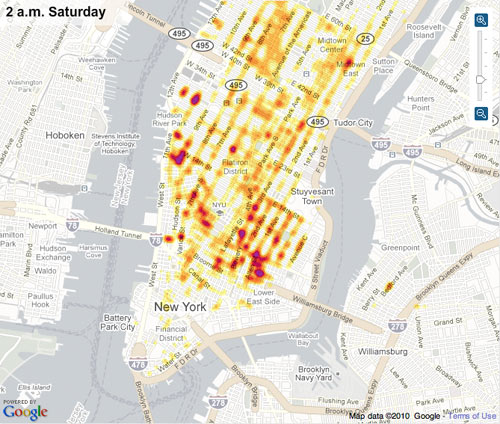
Stay Connected